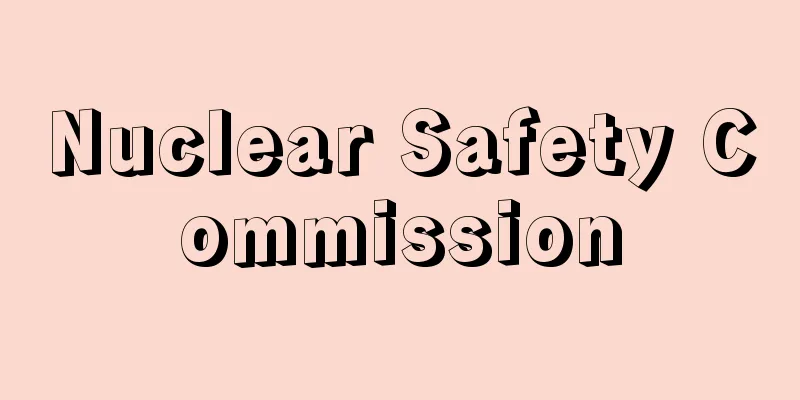Nuclear Safety Commission

|
The Nuclear Safety Commission was established in October 1978 in the Prime Minister's Office with the primary mission of systematically implementing national policies related to the research, development, and utilization of nuclear energy, and in particular, strengthening and enhancing safety assurance. It has the authority to plan, deliberate, and decide on regulatory matters for ensuring safety among the research, development, and utilization of nuclear energy. The Prime Minister must fully respect the decisions of the Nuclear Safety Commission when he receives them. In addition, the Nuclear Safety Commission has the legal authority to make recommendations to the heads of relevant administrative agencies through the Prime Minister when it deems it necessary for the affairs of its jurisdiction. As part of the execution of its jurisdiction, the Nuclear Safety Commission, in accordance with the Reactor Regulation Act, conducts necessary investigations and deliberations in response to consultations from the competent minister on matters related to safety and technical capabilities in the application of standards for reactor installation permits, etc., and submits the results of those investigations and deliberations. When the competent minister issues administrative dispositions such as granting reactor installation permits, he must fully respect the opinions of the Nuclear Safety Commission contained in these recommendations. In Japan, the Nuclear and Industrial Safety Agency of the Ministry of Economy, Trade and Industry implements specific safety regulations, but the Nuclear Safety Commission, which is independent of these government ministries and agencies, monitors and audits them. The Commission is expected to play a central role in nuclear safety and crisis management, and its members are people with highly specialized knowledge. The Commission is composed of five members appointed by the Prime Minister with the consent of both the House of Representatives and the House of Councillors, and the chairman is elected by the members themselves. In addition, the Commission has a Nuclear Reactor Safety Expert Committee to investigate and deliberate issues related to the safety of nuclear reactors, and a Nuclear Fuel Safety Expert Committee to investigate and deliberate issues related to the safety of nuclear fuel materials, and further appoints expert members to investigate and deliberate specialized issues. In 1999, following the Tokai-mura criticality accident, which was Japan's worst nuclear accident at the time, the Commission was said to have made fundamental improvements to its monitoring and auditing functions, as well as its emergency response system. In 2001, the central government reorganization saw the Commission's functions, including the secretariat, strengthened. In 2002, the Nuclear Reactor Regulation Act was amended in response to the data falsification scandal at Tokyo Electric Power Company, and the Commission's functions, including the secretariat, were strengthened. In the same year, the Commission gave a fair evaluation to the reports on accident management measures for severe accidents submitted by each power company at the request of the government. However, the Fukushima Daiichi nuclear accident, which occurred in March 2011 as a result of the Great East Japan Earthquake, reached Level 7 (provisional, announced on April 12), the worst level ever on the International Nuclear Event Scale (INES), completely destroying the myth of nuclear safety in Japan. The Nuclear Safety Commission's lack of response capabilities in all aspects was immediately revealed, including lax safety standards and measures against major accidents, delayed forecasts and responses after the accident occurred, and confusion in information transmission. Japan's nuclear safety regulatory system, centered on the Nuclear Safety Commission, was subjected to severe criticism not only at home but also internationally, and was forced to undergo a fundamental review. Not only the nuclear safety regulation system, but also the industry-academia collusion system in Japanese nuclear engineering that has supported the system has been criticized. As of May 2011, the committee members are Haruki Madarame (chairman, former professor at the Graduate School of Engineering, University of Tokyo), Yutaka Kukita (vice-chairman, former professor at the Graduate School of Engineering, Nagoya University), Shizuyo Kusumi (former council member at the Radiation Effects Association Radiation Epidemiology Research Center), Osamu Oyamada (former director of the Nuclear Chemical Research Institute, Japan Atomic Energy Agency), and Seiji Daitani (former director of the Research Reactor Institute, Kyoto University). After the accident, nuclear safety regulations were strongly criticized for being divided into the Nuclear and Industrial Safety Agency of the Ministry of Economy, Trade and Industry and the Nuclear Safety Commission of the Cabinet Office that monitors them, and the role of the Safety Commission has become a mere formality. Based on this reflection, the government considered establishing a new department related to nuclear regulation as an external bureau in the Ministry of the Environment and transferring the departments related to regulation and monitoring together, and drew up a proposal to establish a new Nuclear Regulation Agency as an external bureau of the Ministry of the Environment. The bill calls for abolishing the Nuclear Safety Commission and establishing a Nuclear Safety Investigation Commission within the agency as a monitoring body to ensure the independence of the Nuclear Regulation Authority, and for granting the agency stronger authority than ever before, including accident investigations. The bill for the Nuclear Regulation Authority was approved by the Cabinet of Prime Minister Yoshihiko Noda and submitted to the Diet on January 31, 2012. However, until the Nuclear Regulation Authority is established, the current Nuclear Safety Commission will continue to carry out important tasks of nuclear safety regulation, such as evaluating stress tests for the restart of nuclear power plants. → Related topics United States Atomic Energy Commission | Ikata Nuclear Power Plant | Ohi Nuclear Power Plant | Atomic Energy Commission | Nuclear Power Plant | Nuclear Accident Source : Heibonsha Encyclopedia About MyPedia Information |
|
原子力の研究,開発,利用に関する国の施策を計画的に遂行し,とくに安全確保の充実強化を主任務として,1978年10月に総理府に設置された。原子力の研究,開発および利用に関する事項のうち,安全の確保のための規制に関する事項について企画し,審議し,決定する権限を持つ。内閣総理大臣は,原子力安全委員会の決定について報告を受けたときは,これを十分に尊重しなければならない。また,所掌事務について必要があると認めるときは,内閣総理大臣を通じて関係行政機関の長に勧告することができること等の法的権限を有している。原子力安全委員会は,所掌事務遂行の一環として,原子炉等規制法に基づき,原子炉の設置許可等の基準の適用のうち安全性および技術的能力に関する事項について,主務大臣の諮問に応じて必要な調査審議を行い,その結果を答申する。主務大臣は,原子炉の設置許可等の行政処分を行う場合は,この答申に盛り込まれた原子力安全委員会の意見を十分に尊重して行わなければならないことになっている。日本の原子力安全規制は経済産業省原子力安全・保安院などが具体的な安全規制を行うが,こうした行政省庁から独立した原子力安全委員会がそれを監視・監査することになっていて,委員会は,原子力の安全と危機管理のセンター的な役割を期待され,高度に専門的な識見を有する人物が委員に任命される。委員会は,衆参両議院の同意を得て内閣総理大臣が任命する5人の委員で構成され,委員長は委員の互選で選出される。また,原子炉に係る安全性に関する事項を調査審議する原子炉安全専門審査会および核燃料物質に係る安全性に関する事項を調査審議する核燃料安全専門審査会を置き,さらに,専門の事項を調査審議させるための専門委員を置く。委員会は,1999年,当時としては日本で最悪の原子力事故とされた東海村臨界事故を受けて,監視・監査機能をはじめ,緊急時対応の体制などの抜本的体制強化がなされたとされた。2001年の中央省庁再編で,総理府から内閣府に移管,02年の東京電力のデータ改ざん問題などを受けた原子炉等規制法の改正により,委員会の機能は事務局体制も含めてさらに強化されたとされてきた。同年,国の求めに応じて各電力会社が提出した,シビアアクシデントに対するアクシデントマネジメント策の報告書に対して妥当の評価を与えた。しかし,11年3月に発生した東日本大震災に伴う,福島第一原発事故は,INES(国際原子力事象評価尺度)の過去最悪レベルであるレベル7(暫定,4月12日発表)に達する大事故となり,日本の原子力の安全神話は完全に崩壊。原子力安全委員会は,安全基準の設定と大事故対策の甘さに加え,事故発生後の見通しと対応の遅れ,情報伝達の混乱など,あらゆる面で対応能力の欠如を一気に露呈した。原子力安全委員会を中心とする日本の原子力安全規制体制は,国内はもとより国際的にも厳しい批判にさらされ,根本的な見直しを迫られた。原子力安全規制体制のみならず,その体制を支えてきた,日本の原子力工学の産学癒着体制も批判されている。11年5月現在の委員は,斑目春樹(委員長,元東京大学大学院工学系研究科教授),久木田豊(委員長代理,元名古屋大学大学院工学研究科教授),久住静代(元財団法人放射線影響協会放射線疫学調査センター審議役),小山田修(元日本原子力研究開発機構原子力化学研究所所長),代谷誠治(元京都大学原子炉実験所所長)の五名である。事故後,原子力安全規制が,経済産業省の原子力安全・保安院による規制とそれを監視する内閣府の原子力安全委員会に別れていて安全委員会の役割が形骸化していると強く批判されたことを受け,この反省に基づき,政府は環境省に新たに外局として原子力規制に関わる部署を設け,規制・監視に関わる部署をまとめて移管することを検討,環境省の外局として原子力規制庁を新設する案をまとめた。同案では,原子力規制庁の独立性を確保する監視機関として,原子力安全委員会を廃止して,庁内に〈原子力安全調査委員会〉を設置することにし,事故調査など従来にない強力な権限を付与するとした。原子力規制庁に関する法案は,野田佳彦内閣の閣議決定をへて12年1月31日に国会に提出された。しかし,原子力規制庁設置までの間は,原発再稼働のためのストレステストの評価など,原子力安全規制の重要な仕事は引き続き現在の原子力安全委員会が担っている。 →関連項目アメリカ原子力委員会|伊方原発|大飯原発|原子力委員会|原子力発電|原発事故 出典 株式会社平凡社百科事典マイペディアについて 情報 |
Recommend
Sŏng Sam‐mun (English spelling)
1418‐56 A Korean scholar and official of the Yi Dy...
Tito (English spelling)
A former Yugoslav politician. His real name was J...
Electro Balance - Electro Balance
...The reading mechanism digitally displays the d...
Wales Office - Wales Office
On the other hand, the daily conversation of ordi...
Conclusion - Gattenjo
…In medieval temples, the nenyo (chief of the yea...
Anshan
A prefecture-level city in the central Liaoning P...
McLennan, JF (English spelling) McLennanJF
… [Sociological interpretation of kinship terms] ...
Big brother - Taikei
〘Noun〙① A word used to show respect to an elder br...
Newcastle (English spelling)
Located on the east coast of New South Wales, Aust...
Department of Medicine
Temporary tax. See the entry for 'ka' in t...
Santa Maria de Naranco
...The Muslim invasion of the peninsula gave birt...
Seiri Koga
A Confucian scholar in the mid-Edo period. Born o...
Iwatsuki Cotton
A cotton fabric woven in the Iwatsuki region of Sa...
Touch - sensation
A sensation caused by tactile stimulation applied...
Aranda
... Interspecific hybridization is also popular, ...





![Sakurajima [town] - Sakurajima](/upload/images/67cba9a56cff6.webp)



